Kabocha squash is a delightful Asian pumpkin used extensively in many Asian cuisines. Its sweet flavor and velvety texture make it a versatile and nutritious addition to your cooking. Learn how to cut kabocha squash with these easy steps with detailed photo instructions!
You can enjoy this winter squash in savory and sweet dishes with various cutting and cooking methods.
More about kabocha here and enjoy these recipes using Kabocha squash. Thai red curry with kabocha squash, Kabocha stir fry with eggs, Kabocha squash coconut milk dessert.

Whether roasted, simmered, or sautéed, kabocha squash will surely add flavor and health benefits to your meals. So, next time you spot a kabocha squash at the store, grab it and embark on a culinary adventure with this delightful Asain squash in your kitchen.
Jump to:
- What is Kabocha Squash?
- History of Kabocha Squash
- What Does Kabocha Squash Taste Like?
- Different Ways to Cut Kabocha Squash
- How to cut Kabocha Squash with a Step-by-step guide
- Helpful Kitchen tips for cutting kabocha squash
- Storage of Your Kabocha
- Different Ways to Cook with Kabocha Squash
- Cooking with Kabocha Squash
- Thai recipes using Kabocha Squash
- Kabocha Squash in Asian Cuisines
- Can You Eat Kabocha Squash Skin?
- How to Pick Kabocha Squash
- Where Can You Find Kabocha Squash?
- Helpful Kitchen Tools for cutting Kabocha squash
- Frequently Asked Questions
- Thai Recipes You'll Love
- How to Cut Kabocha Squash
- Thai recipes using Kabocha squash
- More Helpful Kitchen Resources
What is Kabocha Squash?
Kabocha squash, also known as the Japanese pumpkin, is a popular winter squash with dark green skin and bright orange flesh. It is a flavorful and nutritious vegetable loved for its sweet flavor and nutty undertones.
This versatile ingredient can be used in various recipes, from simple side dishes to hearty stews.
Learn more about Kabocha squash in this blog post here.
History of Kabocha Squash
Kabocha squash is believed to have originated in Japan, hence its name, "Japanese pumpkin." It has been a staple in Japanese cooking for centuries and is now widely enjoyed in various cuisines worldwide.
Its sweet flavor and velvety texture make it a favorite in savory and sweet dishes.
What Does Kabocha Squash Taste Like?
Kabocha squash tastes sweet and a little nutty, which makes it great in sweet and savory foods. It's like a mix of butternut squash and acorn squash with a hint of sweet potato.
Its creamy and velvety textures make it a delightful food and a favorite among squash enthusiasts.
Different Ways to Cut Kabocha Squash
There are various ways to cut kabocha squash, depending on your preference and the recipe you're preparing. You can cut it into large wedges for roasting or simmering or thin slices for stir-frying or sautéing.
Kabocha squash can be cubed for soups and stews or pureed for sauces and desserts.
How to cut Kabocha Squash with a Step-by-step guide
Below are detailed instructions, with photos on how to cut a whole kabocha squash. There are many ways to cut it, but this is the easiest way for me to cut mine every time.
Use these steps as a guide and find the best way for you!
Step 1. First, get a sturdy cutting board and sharp knife ready. Use a sharp, huge knife with a solid handle. Kabocha squash can be stubborn to slice into.
A dull knife will not work well.
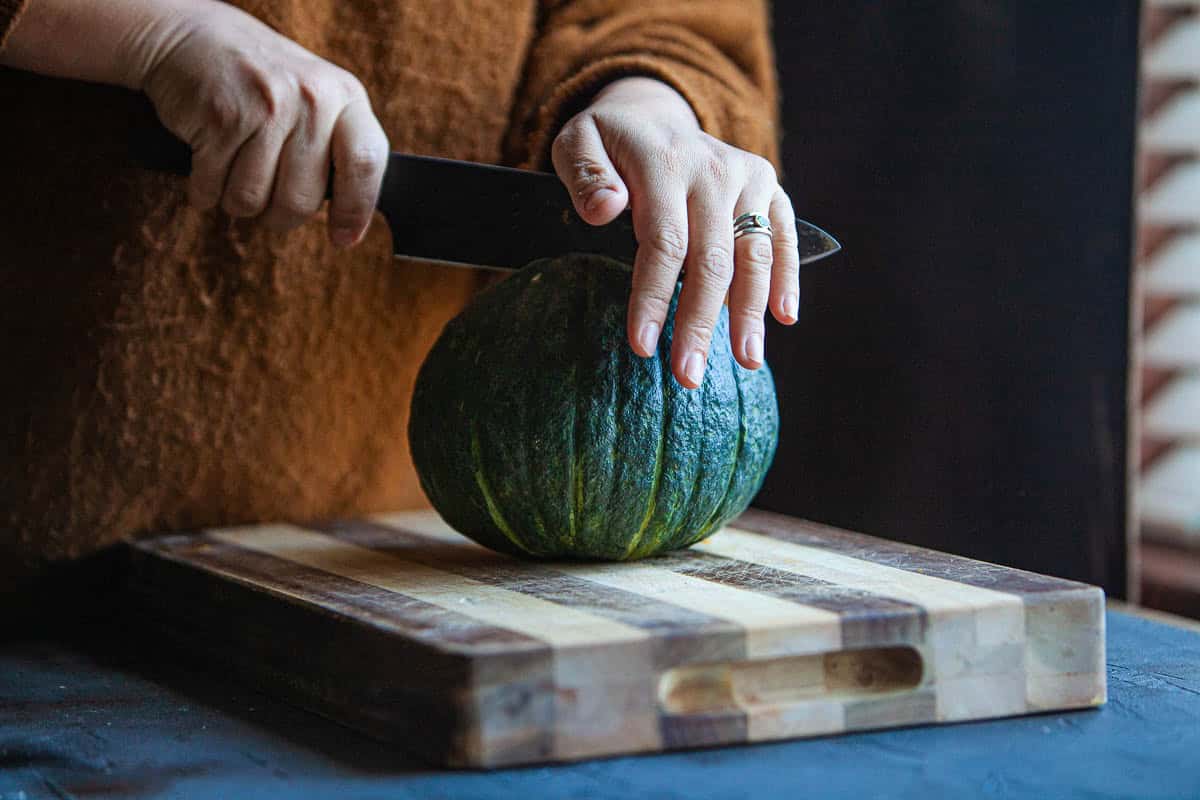
Step 2. Hold the whole kabocha firmly on a cutting board with one hand and the knife on the other. Use the knife tip to push firmly down from the top of the squash.
Get as close to the knobby edge of the stem as possible and wiggle the knife back and forth to help crack the thick layer of the kabocha flesh.
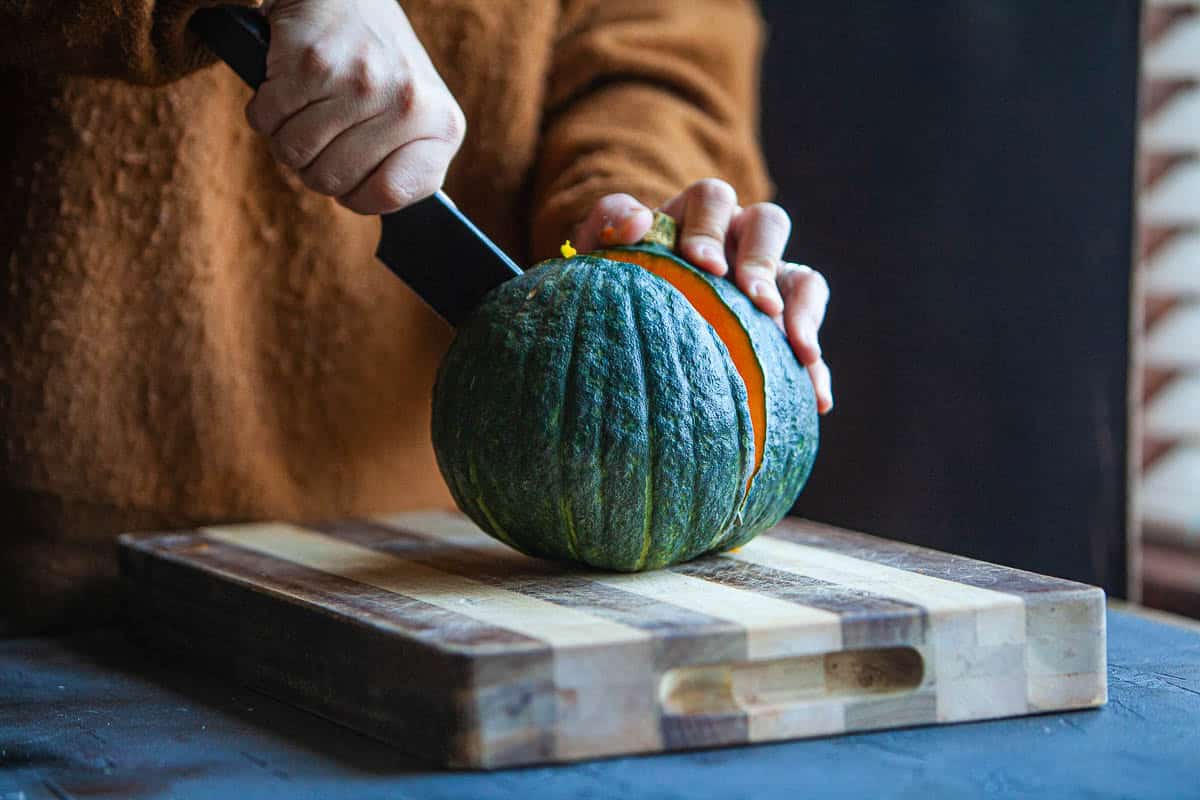
Step 3. Push down on the knife and slice through the whole kabocha from top to bottom until half of the squash is cut through.
The hard part is done, the initial cracking of the kabocha, that is!
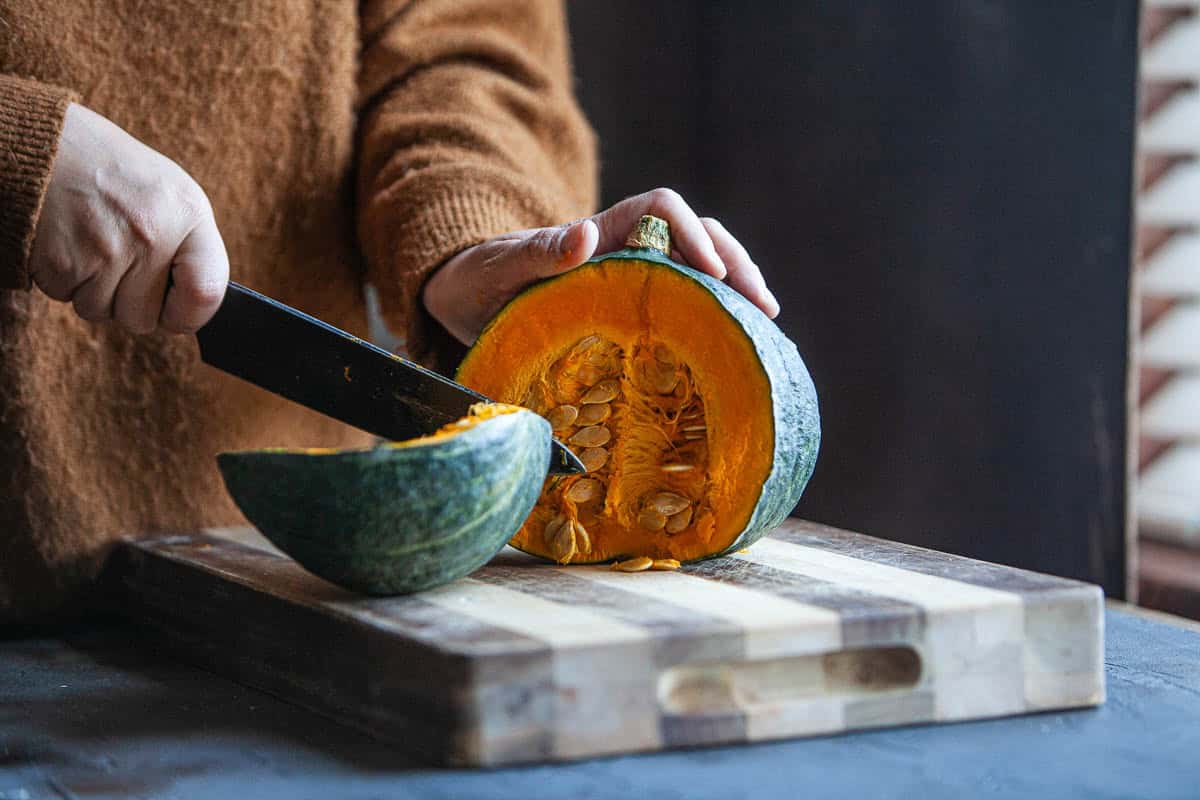
Step 4. You'll see the bright yellow flesh of the squash, along with the fiber and seeds inside. Get ready to scrape out the seeds and stringy part.
Also, save the seeds for roasting later if you'd like! See the kitchen notes section below for a quick tip on roasting the seeds. Check out this Tom Yum roasted kabocha seeds!
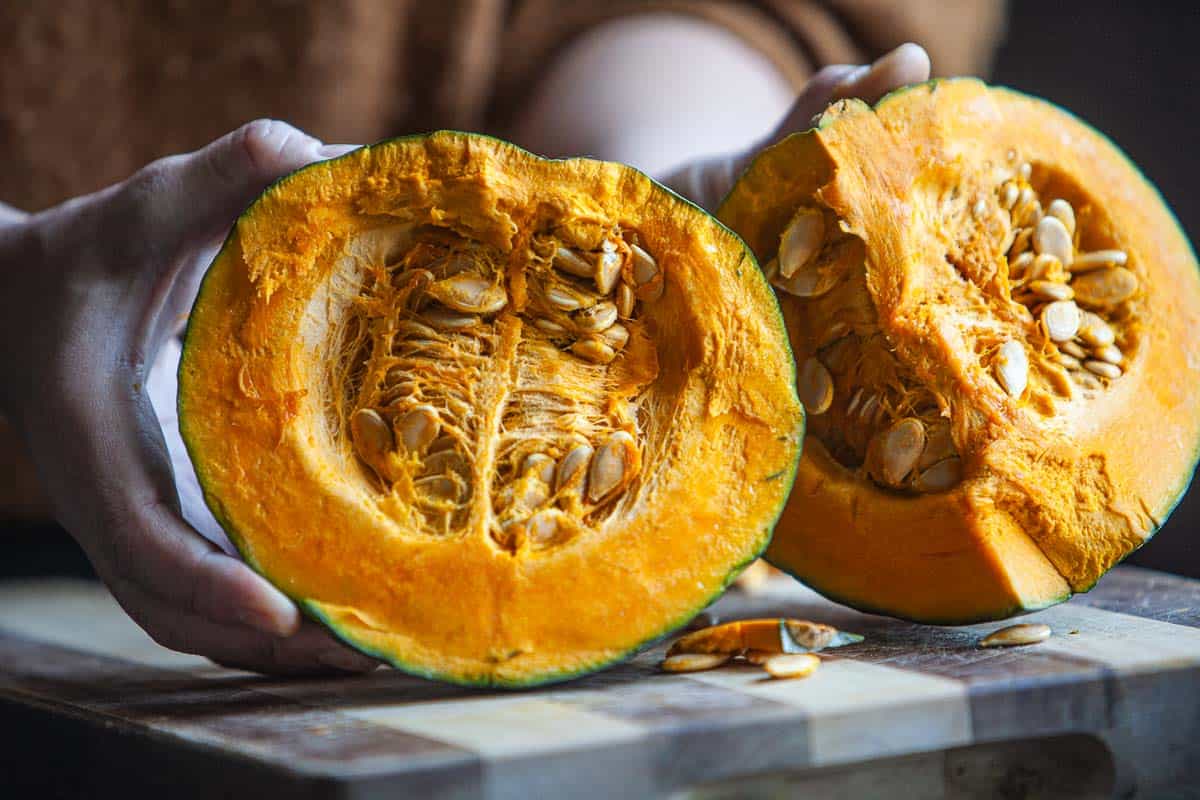
Step 5. Next, use a large spoon to scrape all the stringy fibers and seeds until a hollow, firm flesh is ready for further cutting.
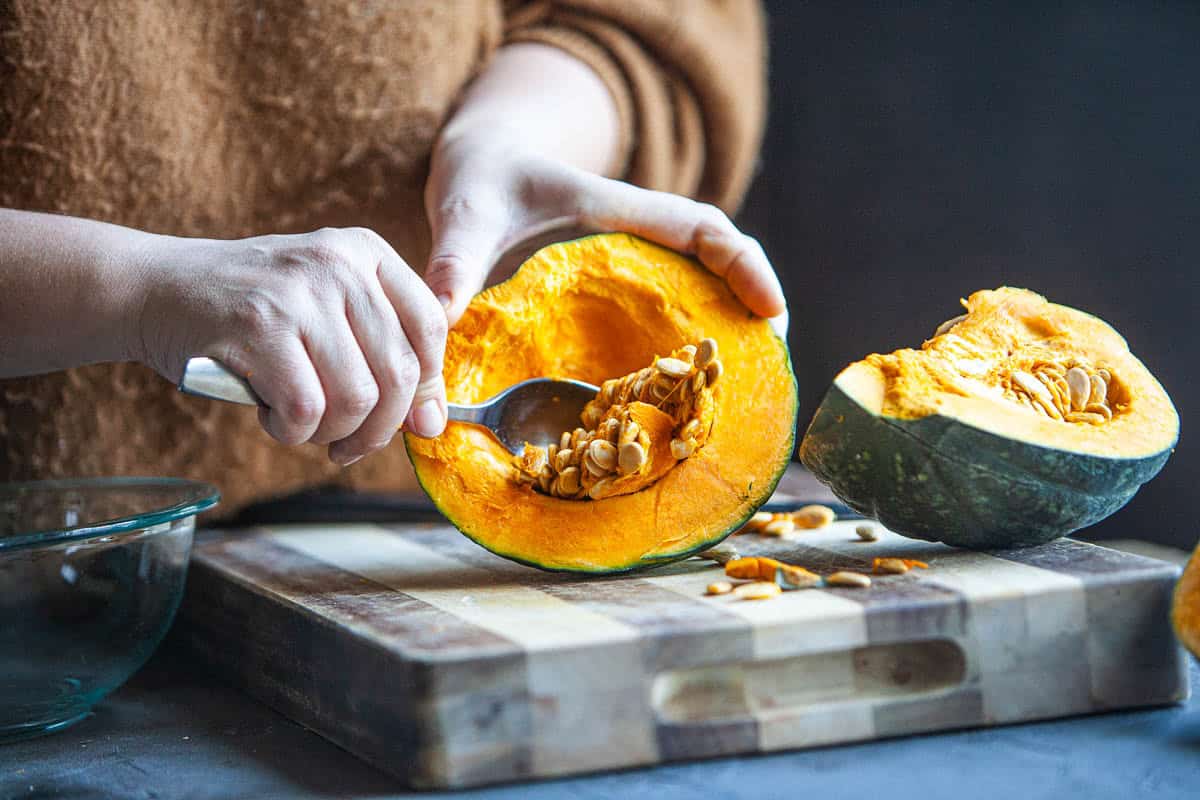
Step 6. From here, slice kabocha squash into any shape you want or need for your recipes! They can be cut long and thin, cubes, chunks, or small pieces.
The skin can be left for recipes like curries, soups, or stews. The skin should be peeled off for mashing or making cakes or desserts.
That's it for how to cut a kabocha squash!

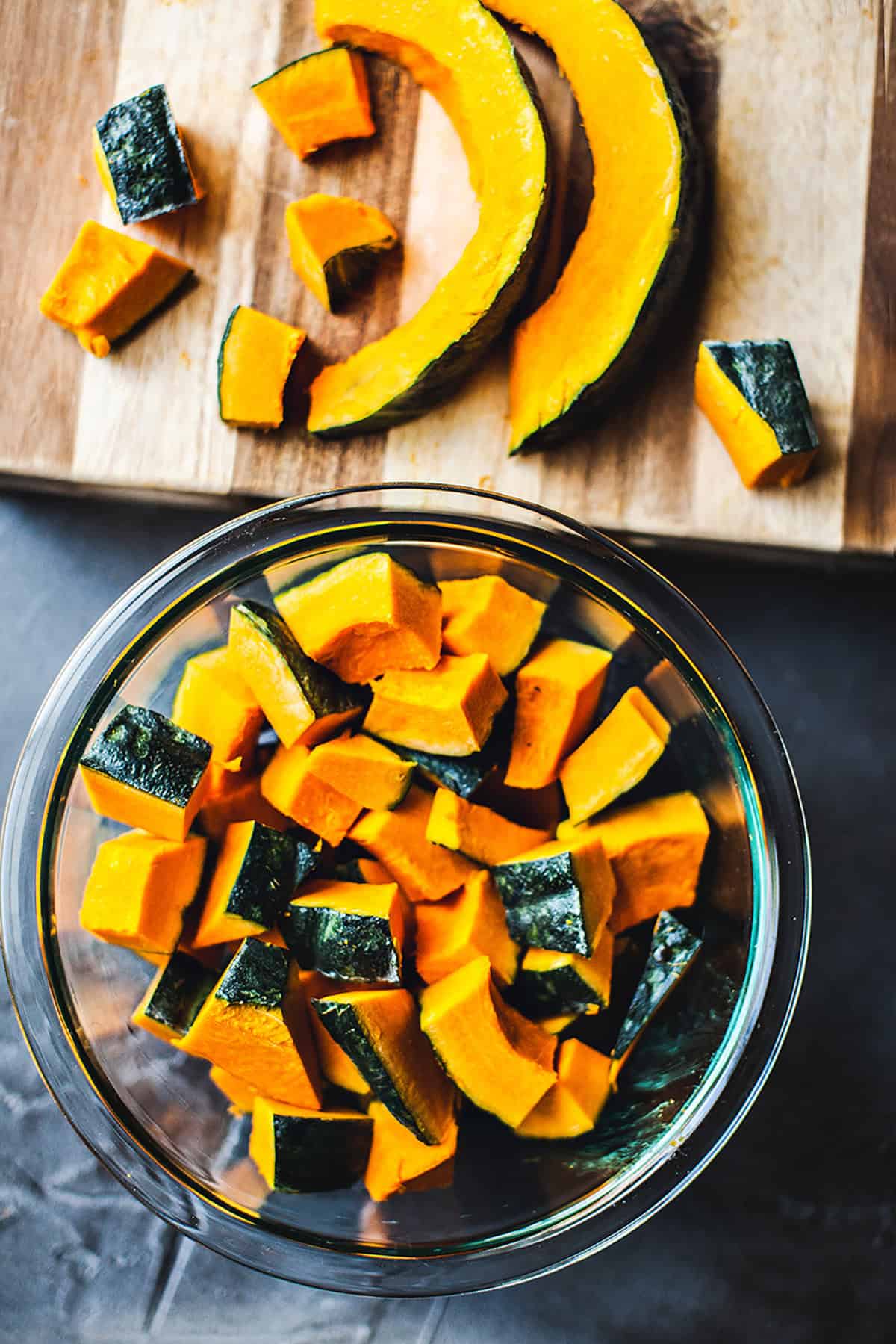
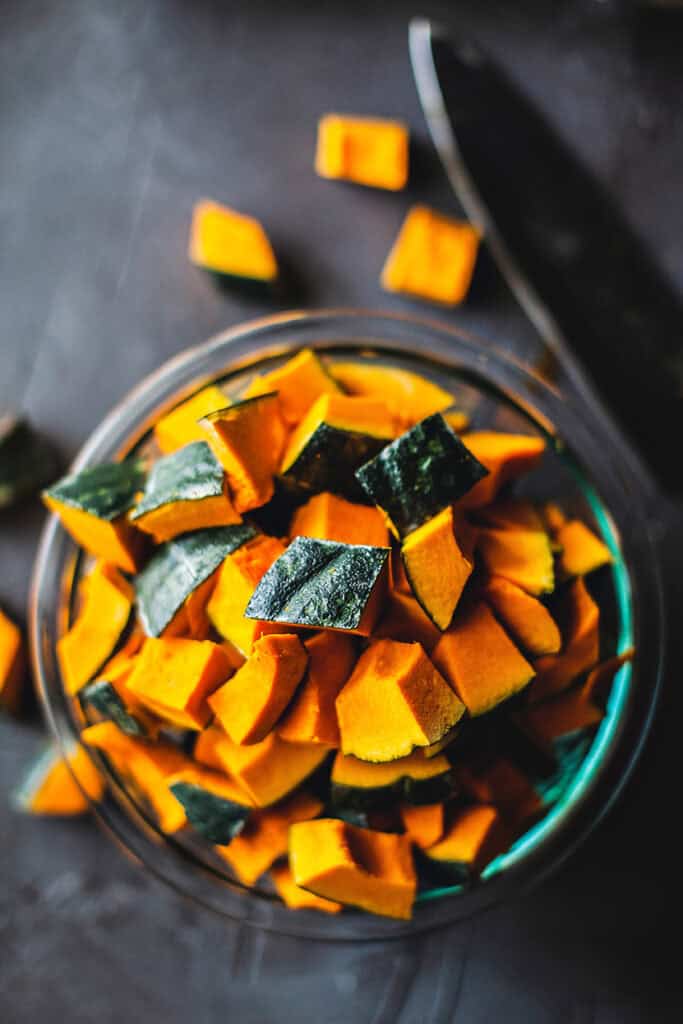
Helpful Kitchen tips for cutting kabocha squash
- Save the kabocha seeds for roasting later. They are delicious and full of healthy nutrients. Scrape out the seeds, remove all the fibers, wash, let dry, then dry, roasting with sea salt on medium heat until fragrant.
- The seeds can also be used for planting in your garden! Prepare the seeds the same way you would for roasting the seeds.
- Allow the seeds to dry completely before storing in a dry container. Start your seeds in the spring for planting.
- A little kitchen secret here: Asian markets have Kabocha squash for sale almost all year round. Keep an eye out for them to enjoy at any time of year!
Storage of Your Kabocha
- Store your uncut, uncooked raw kabocha squash in a cool, dry place, away from direct sunlight, for up to 2 weeks and, often, longer!
- Store leftover cut kabocha pieces in a container with a lid, and it's good in the refrigerator for up to 5 days.
- If you have any leftover cooked squash, store it in an airtight container in the refrigerator for future use.
Different Ways to Cook with Kabocha Squash
Kabocha squash can be used in a variety of ways in your cooking. Roast it for a delicious side dish, puree it for soups or sauces, or add it to curries and stews for a hearty and nutritious meal.
Its versatility makes it a perfect addition to your favorite winter recipes.
Cooking with Kabocha Squash
Kabocha squash is incredibly versatile in the kitchen and can be used in various ways to create sweet and savory dishes. One popular Japanese preparation is kabocha tempura, where thinly sliced kabocha is deep-fried to crisp perfection.
The natural nutty flavor of kabocha pairs well with a dash of soy sauce and sesame seeds.
Try roasting kabocha squash with olive oil, sea salt, and black pepper for a simpler approach. The result is tender and golden brown squash that makes a great addition to salads, soups, or as a side dish to complement your favorite recipes.
Thai recipes using Kabocha Squash
Kabocha squash is very common in Thailand, and there are many varieties, too. The most common squash outside of Thailand is the round shape, with green skin and bright orange color.
They are referred to as pumpkins in Thai. The Thai word for it is "Fak Tong" (ฟักทอง).
Thai pumpkin custard and kabocha squash in sweet coconut milk sauce are some of the popular desserts in Thai cuisine.
These popular recipes use kabocha squash Thai Chicken and kabocha squash curry, Kabocha squash soup with pork ribs, and kabocha squash stir-fries.
Kabocha Squash in Asian Cuisines
Kabocha squash is special in Asian cuisines, where it is cherished for its sweet flavor and creamy texture. It is commonly used in soups, stews, and curries, as well as in tempura and stir-fry dishes.
In Japanese cuisine, it is often featured in nimono, a traditional simmered dish, and as an ingredient in sushi rolls. Its ability to absorb the flavors of spices and seasonings makes it a versatile ingredient in various Asian recipes.
The options are endless, from a savory kabocha curry to a sweet and savory kabocha puree. Whether you're a seasoned kabocha enthusiast or a first-time taster, this Japanese squash variety will surely become your favorite in your kitchen.
Can You Eat Kabocha Squash Skin?
Yes, the skin of kabocha squash is edible, especially when cooked until tender. The skin adds a pleasant chewiness and extra nutrients to your dishes.
However, peel the skin before cooking if you prefer a smoother texture.
How to Pick Kabocha Squash
When selecting the perfect kabocha squash, look for one with firm and dark green skin. Avoid squash with soft spots or blemishes, which may indicate poor quality.
A ripe squash should fee full and heavy and the skin has a dark green color on the outside.
Where Can You Find Kabocha Squash?
Kabocha squash is readily available in most grocery stores in late summer and early fall through to winter. You can also find it at Asian markets, Trader Joe's, Whole Foods, farmer's markets, and pumpkin patches.
Helpful Kitchen Tools for cutting Kabocha squash
Frequently Asked Questions
To make kabocha squash easier to cut, you can place the whole squash in a microwave for a couple of minutes to soften it up. This will make it less challenging to slice through.
However, if you don't have a microwave or prefer not to use one, there are still ways to cut kabocha squash.
A chef's knife or a cleaver is best for tackling kabocha squash. The weight and strength of these knives will help you cut through the tough skin and flesh.
Kabocha squash is a nutritional powerhouse, rich in vitamins A and C and beta-carotene, which is beneficial for eye health. It is also a great source of B vitamins and essential minerals like potassium and magnesium.
Yes, the skin of kabocha squash is entirely edible, especially when cooked. However, if the skin is too tough, peel it before cooking.
Absolutely! Roast the seeds like you would any other pumpkin seeds. Try this Tom Yum roasted seeds.
Dry the seeds, toss them with salt and oil, then roast them in the oven until golden brown and crunchy.
Thai Recipes You'll Love
- Massaman Curry with Sweet Potatoes
- Kabocha Squash Stir fry, a simple side dish with Kabocha
- Instant Pot Creamy Tom Yum
Love a recipe you've tried? Please leave a 5-star rating in the recipe card below and a review in the comments section further down the page. Or follow me on Facebook, Pinterest, or Instagram!
Print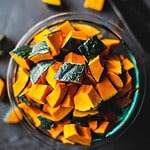
How to Cut Kabocha Squash
- Total Time: 20
- Yield: 8 1x
- Diet: Low Calorie
Description
Kabocha squash is a delightful Asian pumpkin used extensively in many Asian cuisines. Its sweet flavor and velvety texture make it a versatile and nutritious addition to your cooking. Learn how to cut kabocha squash with these easy steps with detailed photo instructions!
Ingredients
- 1 whole kabocha squash
Instructions
- First, get a sturdy cutting board and sharp knife ready. Use a sharp knife with a solid handle, as the hard kabocha squash can be stubborn to slice into. A dull knife will not work well.
- Hold the whole kabocha firmly on a cutting board with one hand and the knife on the other. Use the knife tip to push firmly down from the top of the squash. Get as close to the knobby edge of the stem as possible and wiggle the knife back and forth to help crack the thick layer of the kabocha flesh.
- Push down on the knife and slice through the whole kabocha from top to bottom until half of the squash is cut through. The hard part is done, the initial cracking of the kabocha, that is!
- You'll see the bright yellow flesh of the squash, along with the fiber and seeds inside. Get ready to scrape out the seeds and stringy part. Save the seeds for cooking later if you'd like!
- Use a large spoon to scrape all the stringy fibers and seeds until a hollow, firm flesh is ready for further cutting.
- From here, slice kabocha squash into any shape you want or need for your recipes! They can be cut long and thin, cubes, chunks, or small pieces. The skin can be left for certain recipes like curries, soups, or stews. The skin should be peeled off for mashing or making cakes or desserts. That's it for how to cut a kabocha squash!
Notes
- Save the kabocha seeds for roasting later. They are delicious and full of healthy nutrients. Scrape out the seeds, remove all the fibers, wash, let dry, then dry, roasting with sea salt on medium heat until fragrant.
- The seeds can also be used for planting in your garden! Prepare the seeds the same way you would for roasting the seeds. Allow the seeds to dry completely before storing in a dry container. Start your seeds in the spring for planting.
- A little kitchen secret here. Asian markets have Kabocha squash for sale almost all year round. So look for them to enjoy at any time of year!
** Thank you so much for visiting my blog! This is truly a passion for me. If you have enjoyed these recipes and appreciate the hard work I put into them, I would love it if you would share them with your friends! Your recommendation is the highest review I could hope for, and I’d appreciate it! **
- Prep Time: 20
- Category: Thai kitchen resources
- Method: cutting
- Cuisine: Thai
Thai recipes using Kabocha squash
More Helpful Kitchen Resources
Check out these helpful blog posts with ingredients used in Thai cooking.

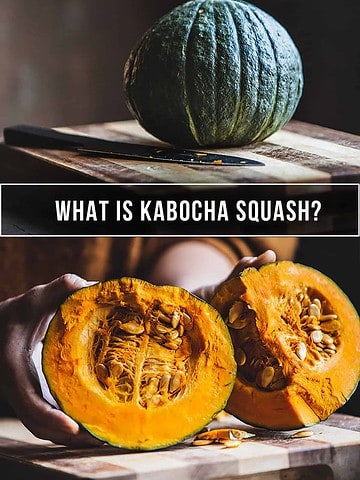
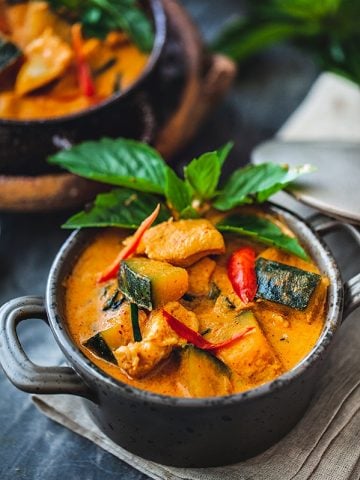
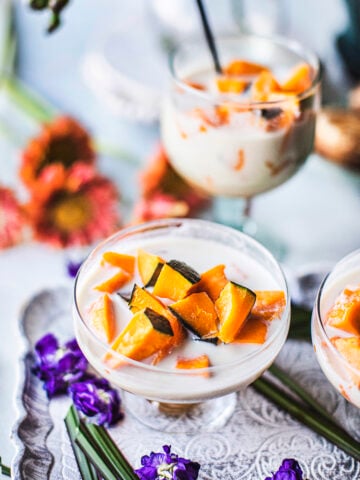
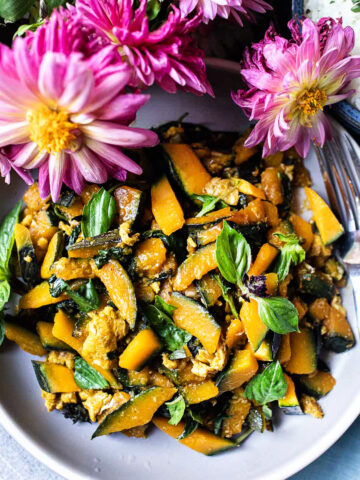
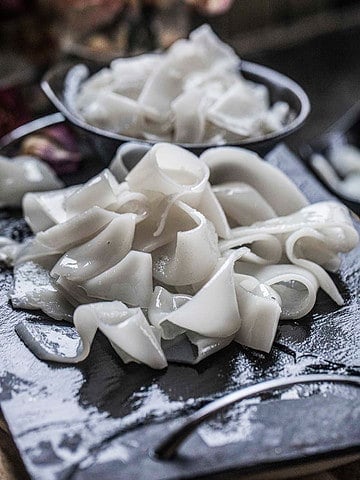
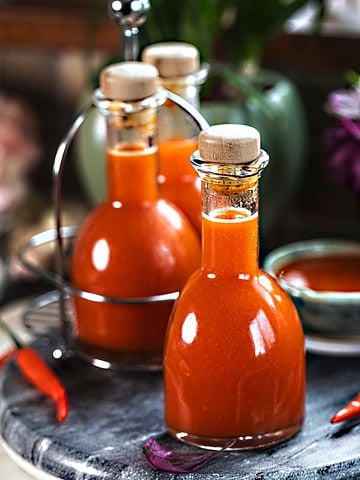
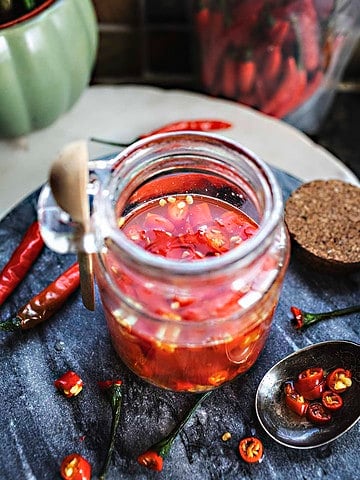
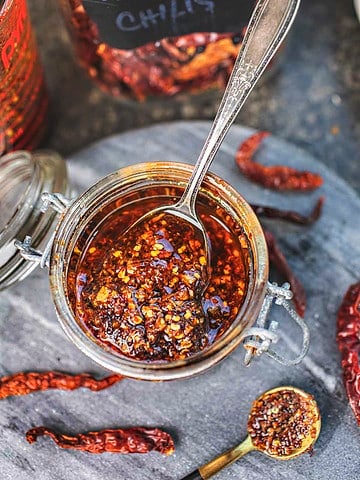
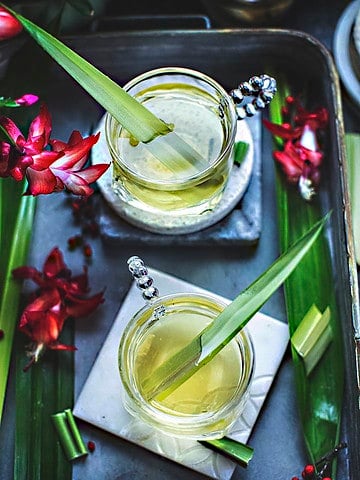
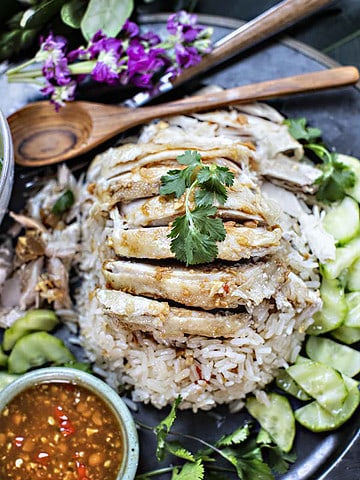
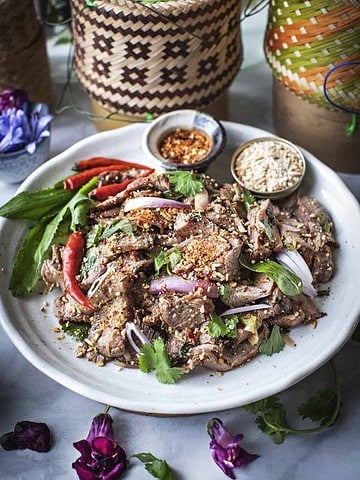
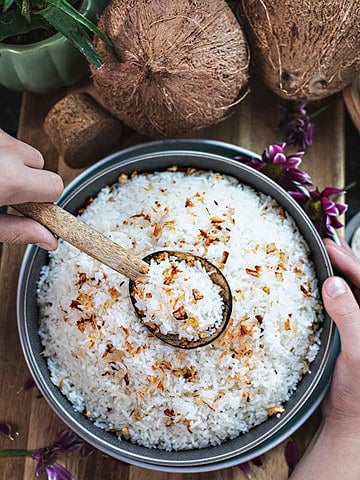
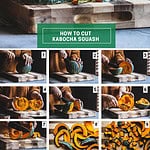
Angel
The pictures are amazing s d very helpful! Thanks!
Bethany
Really helpful and detailed instructions! Thank you.